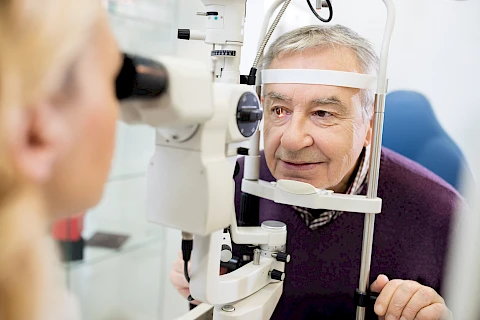
Diabetic retinopathy is a serious eye condition that can affect those with diabetes. Seniors and caregivers need to be aware of this condition because it can significantly impact vision if left untreated. Understanding the stages of this condition helps seniors take proactive steps to preserve their vision. Early detection and proper care can greatly impact the outcome, making it important to stay informed about potential signs.
What Is Diabetic Retinopathy?
Diabetic retinopathy occurs when high blood sugar levels damage the blood vessels in the retina, the part of the eye that captures images. Over time, these blood vessels can leak fluid or hemorrhage, leading to vision problems. Common symptoms include blurred vision, difficulty seeing colors, and dark spots in your vision, often referred to as "floaters." If you notice any of these symptoms, you need to consult an eye care professional.
Mild Nonproliferative Retinopathy
In the initial stage, known as mild nonproliferative retinopathy, small areas of balloon-like swelling occur in the retina's blood vessels. At this stage, you might not notice any symptoms, making early detection through regular eye exams necessary. Catching the condition early can help prevent further progression.
Moderate Nonproliferative Retinopathy
As the condition progresses to moderate nonproliferative retinopathy, the swelling increases and some blood vessels may begin to lose their ability to transport blood. This stage may start to affect your vision, making it harder to see clearly. You need to monitor these changes closely with your healthcare provider.
Severe Nonproliferative Retinopathy
In severe nonproliferative retinopathy, many more blood vessels are blocked, depriving areas of the retina of their blood supply. This can lead to the growth of new, unhealthy blood vessels. Symptoms become more pronounced, and vision loss is more likely. The risk of further complications increases, making it vital to have routine check-ups and follow treatment plans.
Proliferative Retinopathy
Proliferative retinopathy is the most advanced stage and requires immediate attention. In this stage, new blood vessels grow along the retina and into the vitreous, the gel-like fluid in the eye. These vessels can leak and bleed, leading to severe vision loss or even blindness. Treatment urgency is critical to prevent irreversible damage.
Regular Eye Exams
Regular eye exams play a vital role in detecting diabetic retinopathy early, especially because symptoms can be subtle at first. For seniors, it's recommended to have a comprehensive eye exam at least once a year. These exams can help monitor the condition's progression and allow for adjustments in treatment as needed. Early detection through exams can prevent a lot of potential complications.
Working With Eye Care Professionals
Collaborating with eye care professionals is part of managing diabetic retinopathy. Personalized care plans can be developed to address your specific needs. Treatments may include medications, laser treatments, or surgery to prevent or slow down further damage. Effective communication with your healthcare providers ensures you understand your condition and treatment options, helping you make informed decisions for your eye health.
Taking Action for Better Vision
Diabetic retinopathy is a serious but manageable condition if detected early and monitored regularly. Understanding the stages and actively participating in your care can significantly impact your quality of life. Prioritize your eye health by having regular check-ups and discussing any concerns with your eye care professionals. If you or a loved one needs support in managing diabetic retinopathy or other senior health needs, contact Senior Helpers Indianapolis. We're here to assist seniors in Indianapolis, Carmel, and Brownsburg in living healthy and fulfilling lives.
Your vision is worth the effort, and small steps today can lead to a brighter, clearer tomorrow.